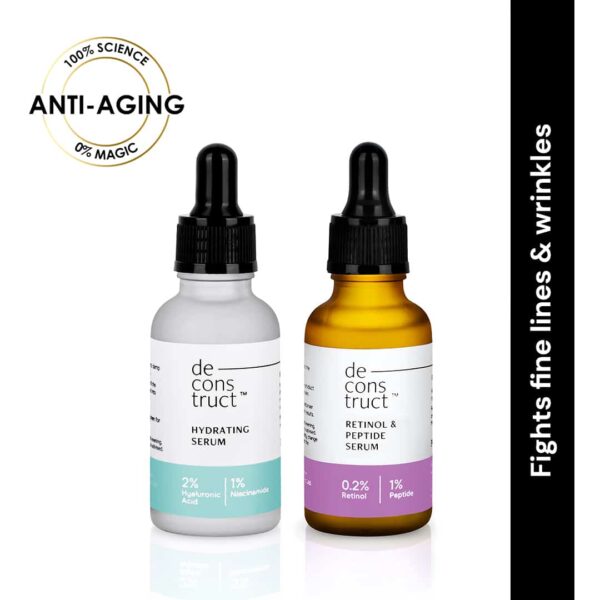Hyaluronic acid and retinol complement each other when used together. Although retinol is the only certified anti-aging ingredient on the market, it works better by adding hyaluronic acid to the equation. Regular retinol use has side effects on your skin, but hyaluronic acid minimizes its harshness.
Men and women worry about combining ingredients because of the possible side effects. However, dermatologists back the use of hyaluronic acid and retinol together for several reasons. Here’s more about retinol and hyaluronic acid and combining retinol and hyaluronic acid serum for smoother skin.
Retinol: What Is It?
Retinol is a form of vitamin A and has excellent anti-aging properties. It increases collagen production, thus reducing wrinkles and fine lines. Retinol increases new cell production speed, which has adverse effects on your skin. The side effects include:
- Redness
- Flakiness
- Dryness
Dermatologists recommend using retinol alongside hydrating and calming ingredients. One of these ingredients is hyaluronic acid.
What is Hyaluronic Acid?
Hyaluronic acid is an emollient, meaning it retains moisture on your skin and allows for absorption into the skin. Dermatologists also define hyaluronic acid as a humectant since it draws moisture from the environment to the skin’s surface. This reduces scaly, dry skin.
Hyaluronic acid is a key ingredient in moisturizers, hydrating serums, and toners. It works well with retinol to reduce its drying effects.
Is it Safe to Combine Retinol and Hyaluronic Acid?
Retinol has drying effects, so you must use it alongside a hydrating ingredient. That’s what makes these two ingredients a great pair. Salicylic and glycolic acids are great as chemical exfoliants. However, this makes them unsuitable for use with retinol. On the other hand, hyaluronic acid leaves you soft, hydrated, and perfect for retinol treatment.
Still, you must know how to use them together to get the most out of these ingredients.
How to Use Hyaluronic Acid and Retinol Together
Here’s a step-by-step guide to help you get the best results by combining retinol and hyaluronic acid in your daily routine.
Step 1 – Cleanse Your Face
Use an effective cleanse to remove impurities from your skin, including dirt, makeup, and debris. Cleaning the skin helps products adhere to the skin easily.
Step 2 – Dry Your Face
Pat your skin dry. Do not rub since it causes skin irritation and increases the chances of skin blemishes and other issues.
Step 3 – Apply Retinol
Use retinol on a dry face. Applying it while your face is wet makes your skin susceptible to irritation. Use your fingers, apply retinol and pat it into your skin. Focus on areas with wrinkles or fine lines for effectiveness. Then, allow it to sit for a few minutes.
Step 3 – Apply Hyaluronic Acid
Always use hyaluronic acid after retinol to lock in the moisture. It does not matter the form of hyaluronic acid you have. Serums and moisturizers come after retinol application. Doing so allows hyaluronic acid to perform its role as an emollient. One of the most common questions dermatologists get is, “is hyaluronic acid good for oily skin?” The response is positive since it helps seal moisture since oily skin gets dry too.
Retinol has excellent anti-aging qualities. However, you cannot use it alone since it causes peeling, redness, and irritation. Combining it with hyaluronic acid improves the skin’s suppleness and moisture retention. Thus, you achieve younger, softer, and healthier-looking skin.
For more blogs click here.


More Stories
Why Third Party Manufacturing Is the Backbone of the Pharma Industry in 2025
Becoming a Pharmaceutical Distributor with Aenor Pharmaceuticals
Is Your Sedentary Lifestyle Destroying Your Hip?